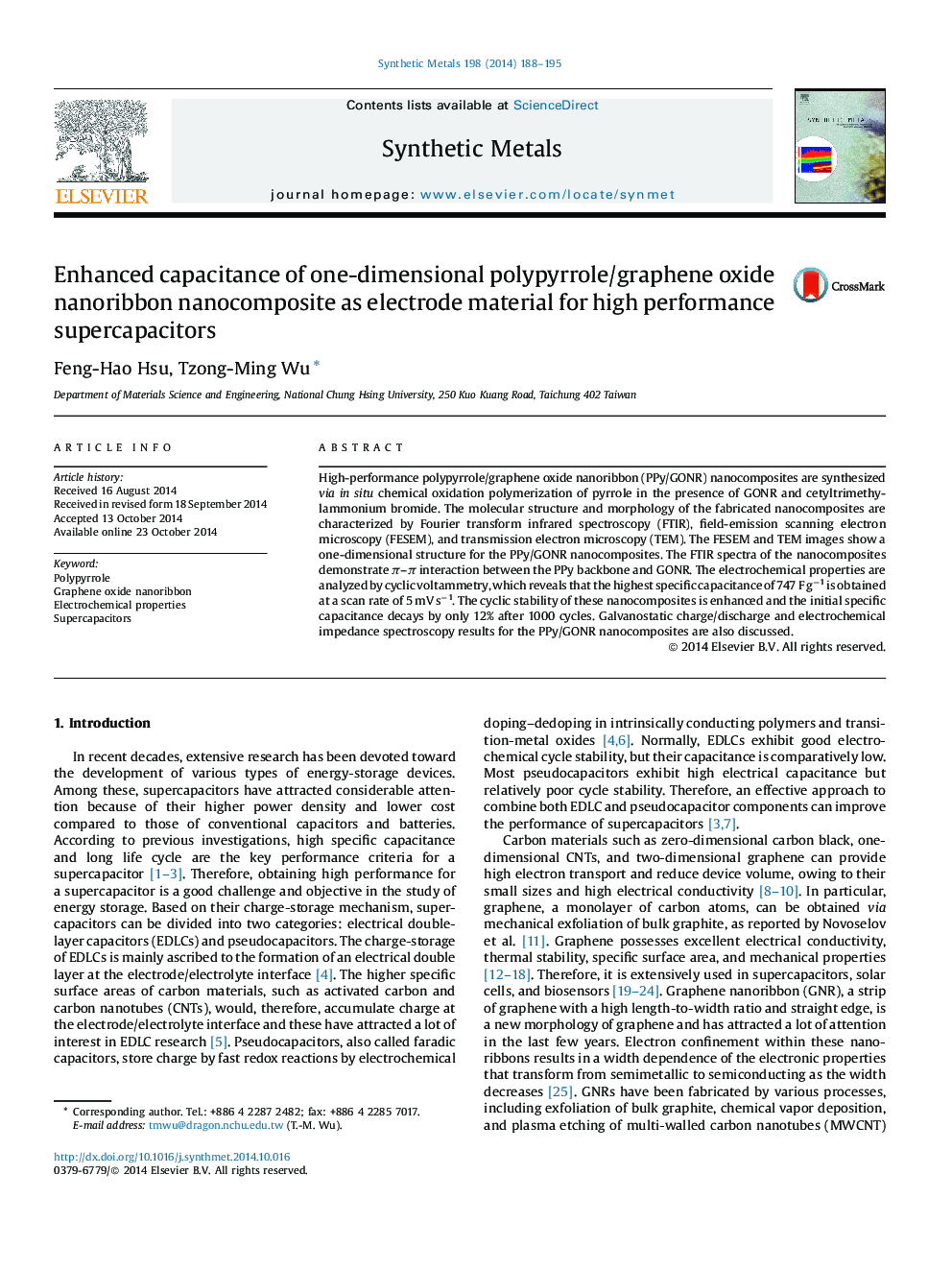| Article ID | Journal | Published Year | Pages | File Type |
|---|---|---|---|---|
| 1440734 | Synthetic Metals | 2014 | 8 Pages |
•PPy/GONR nanocomposites are synthesized using in situ chemical polymerization.•The notable specific capacitance of 747 F g−1 at scan rate of 5 mV s−1 is obtained.•Excellent cyclic stability of PPy/GONR nanocomposites is achieved.
High-performance polypyrrole/graphene oxide nanoribbon (PPy/GONR) nanocomposites are synthesized via in situ chemical oxidation polymerization of pyrrole in the presence of GONR and cetyltrimethylammonium bromide. The molecular structure and morphology of the fabricated nanocomposites are characterized by Fourier transform infrared spectroscopy (FTIR), field-emission scanning electron microscopy (FESEM), and transmission electron microscopy (TEM). The FESEM and TEM images show a one-dimensional structure for the PPy/GONR nanocomposites. The FTIR spectra of the nanocomposites demonstrate π–π interaction between the PPy backbone and GONR. The electrochemical properties are analyzed by cyclic voltammetry, which reveals that the highest specific capacitance of 747 F g−1 is obtained at a scan rate of 5 mV s−1. The cyclic stability of these nanocomposites is enhanced and the initial specific capacitance decays by only 12% after 1000 cycles. Galvanostatic charge/discharge and electrochemical impedance spectroscopy results for the PPy/GONR nanocomposites are also discussed.
Graphical abstractFigure optionsDownload full-size imageDownload as PowerPoint slide
